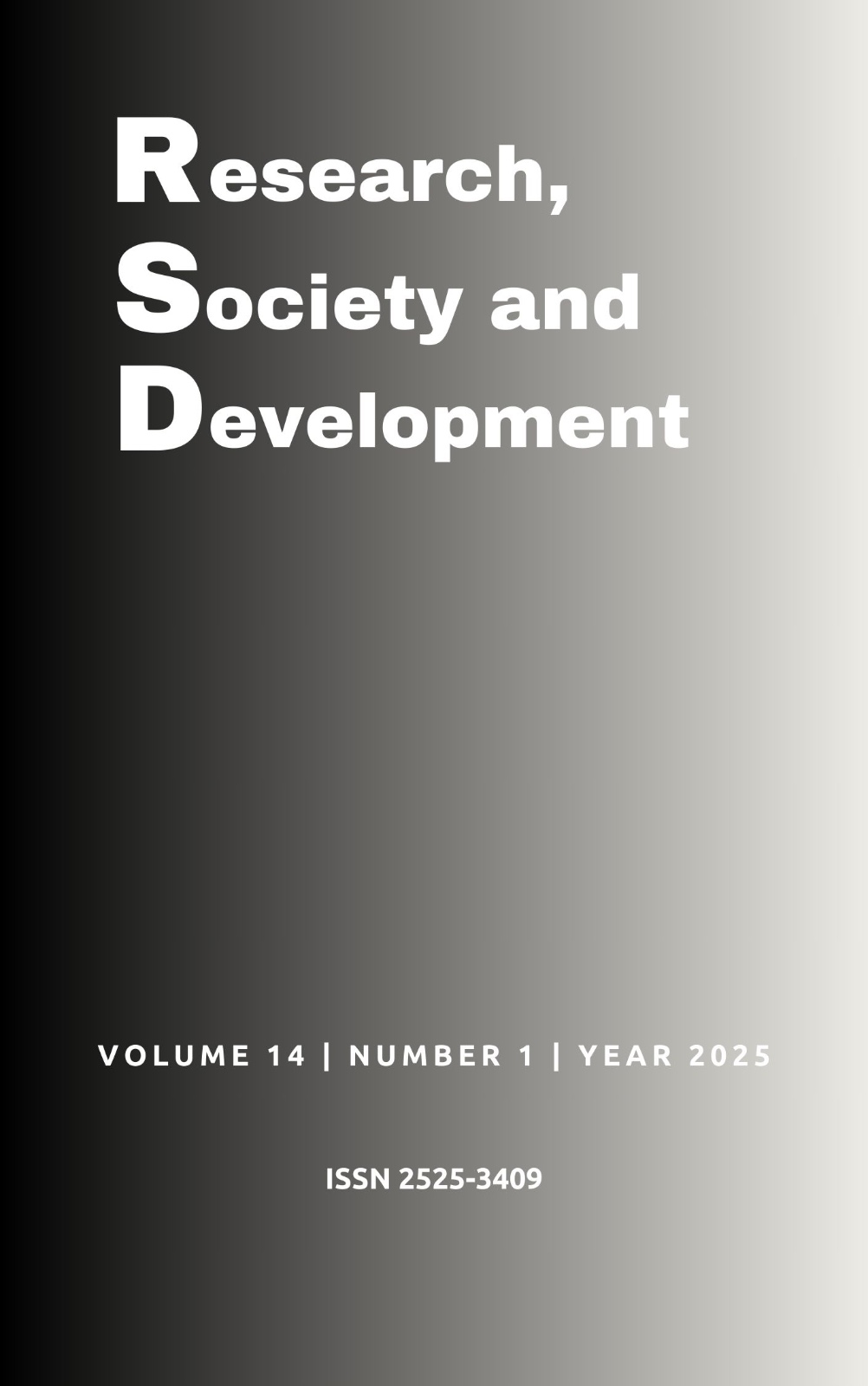Factors associated with the prevalence of mammary tumors in female dogs and their implications for post-chemotherapy prognosis
DOI:
https://doi.org/10.33448/rsd-v14i1.48143Keywords:
Preventive Veterinary Medicine, Neoplasms, Oncology.Abstract
Mammary tumors in bitches are one of the most common neoplasms in this species and are influenced by hormonal and environmental factors. The aim of this study was to analyze the clinical, diagnostic and therapeutic aspects of mammary tumors in female dogs. The methodology used consisted of researching scientific articles in databases such as Google Scholar, PubMed and Scielo, using terms linked to mammary tumors, neoplasms and dogs. The findings suggest that the disease usually manifests itself in elderly dogs, with the most frequent presence of mammary nodules, with malignant potential in more than 50% of cases. Diagnosis is based on clinical, cytological and histopathological analyses to establish the nature of the tumor and its prognosis. Therapy involves the surgical removal of the tumor, which may involve total or partial mastectomy, whether or not associated with complementary therapies such as chemotherapy. Early castration is seen as an effective prevention strategy. Even with the seriousness of malignant cases, the prognosis can be promising, as long as diagnosis and treatment are early. It is essential that owners pay attention to clinical signs and maintain regular veterinary follow-up. This study concludes that proper management and early treatment can significantly improve the quality of life of affected bitches.
Downloads
References
Abdelmegeed, S. M., & Mohammed, S. (2018). Comparative oncology: Mammary tumors in dogs and cats. Oncology Letters, 15(1), 23-34
Alenza, P. D. P., Peña, L., del Castillo, N., & Nieto, A. (1998). Factors influencing the incidence and prognosis of canine mammary tumours. Journal of Small Animal Practice, 39(7), 287-291.
Bezerra, C. R. S., Alves, F. W. S., Silva, M. C., Freires, W. C., Cavalcante, F. E. P., Pinheiro, B. Q., & Silva, I. N. G. (2024). Avaliação citológica e correlações histopatológicas em tumores mamários caninos: Precisão diagnóstica. Ciência Animal, 34(2), 1-10.
Beauvais, W., Cardwell, J. M., & Brodbelt, D. C. (2012). The effect of neutering on the risk of mammary tumours in dogs: A systematic review. Journal of Small Animal Practice, 53(6), 314-322.
Cassali, G. D., et al. (2020). Comparative oncology in practice: Canine mammary tumors as models for human breast cancer research. Veterinary Pathology, 48(1), 132-146.
Casarin, M. A., et al. (2020). Revisão narrativa: Metodologia e aplicações em pesquisas biomédicas. São Paulo: Editora Ciências em Saúde.
Cavalcante, F. E. P., & Oliveira, L. L. (2020). Revisão narrativa: Uma abordagem metodológica. Revista de Pesquisa em Saúde e Ambiente, 8(3), 1-8.
Lim, H. Y., Im, K. S., Kim, N. H., Kim, H. W., Shin, J. I., & Sur, J. H. (2015). Obesity, expression of adipocytokines, and tumor grade are associated with poor prognosis in canine mammary gland tumors. Veterinary Pathology, 52(6), 1045-1051.
Lim, H. Y., et al. (2022). Obesity-induced changes in canine mammary tumors: Biological insights. Veterinary Research Communications, 46(2), 89-101.
Moraes, F. A. G. de. (2024). Fatores de risco associados ao surgimento de tumor de mama em cadelas na cidade de Guarapuava-PR. Dissertação de Mestrado, Universidade Estadual do Centro-Oeste.
Nguyen, F., et al. (2021). Insights into the molecular mechanisms of canine mammary tumors. Veterinary Oncology, 15(2), 85-92.
Peralta, I. L. S. R. (2018). Tumores mamários em cadelas: Fatores de prognóstico. Dissertação de Mestrado, Escola Universitária Vasco da Gama.
Rother, E. T. (2007). Revisão sistemática x revisão narrativa. Acta Paulista de Enfermagem, 20(2), v-vi.
Sleeckx, N., de Rooster, H., Veldhuis Kroeze, E. J., Van Ginneken, C., & Van Brantegem, L. (2011). Canine mammary tumors as models for human breast cancer: Comparative pathology and molecular insights. Veterinary Pathology, 48(1), 132-146.
Sorenmo, K. U., Rasotto, R., Zappulli, V., & Goldschmidt, M. H. (2020). Development, anatomy, histology, lymphatic supply, and significance of canine mammary tumors. Journal of Veterinary Science, 21(4), e54.
Tiller, K. (2015). The role of diet and obesity in canine mammary tumor progression. Veterinary Clinical Pathology, 44(4), 476-485
Watson, A. L., et al. (2023). Biomarkers and their implications in canine mammary tumors. Frontiers in Veterinary Science, 10, 789123.
Yildirim, Z., & Gurel, A. (2020). Histopathology and immunohistochemistry of canine mammary tumors. Turkish Journal of Veterinary and Animal Sciences, 44(3), 229-235.
Zuccari, D. A. P. C., et al. (2020). Personalized approaches in the treatment of canine mammary tumors. Brazilian Journal of Veterinary Pathology, 12(1), 15-23.
Zucconi, M., et al. (2021). Advanced imaging techniques in canine mammary oncology. Journal of Veterinary Imaging, 15(4), 233-241.
Zupančič, M., et al. (2023). Canine mammary tumors: Genetic and environmental risk factors. Veterinary Oncology Journal, 18(2), 44-57.
Downloads
Published
Issue
Section
License
Copyright (c) 2025 Aline Bittencourt de Souza; Lizane Paula de Farias e Silva; Marilene Felipe Santiago; Marcos Henrique da Silva; Maria Clara Lavrador Farias; Débora Lopes Procópio; Douglas Sabino Leite de Oliveira Duarte; Mateus de Melo Lima Waterloo

This work is licensed under a Creative Commons Attribution 4.0 International License.
Authors who publish with this journal agree to the following terms:
1) Authors retain copyright and grant the journal right of first publication with the work simultaneously licensed under a Creative Commons Attribution License that allows others to share the work with an acknowledgement of the work's authorship and initial publication in this journal.
2) Authors are able to enter into separate, additional contractual arrangements for the non-exclusive distribution of the journal's published version of the work (e.g., post it to an institutional repository or publish it in a book), with an acknowledgement of its initial publication in this journal.
3) Authors are permitted and encouraged to post their work online (e.g., in institutional repositories or on their website) prior to and during the submission process, as it can lead to productive exchanges, as well as earlier and greater citation of published work.


